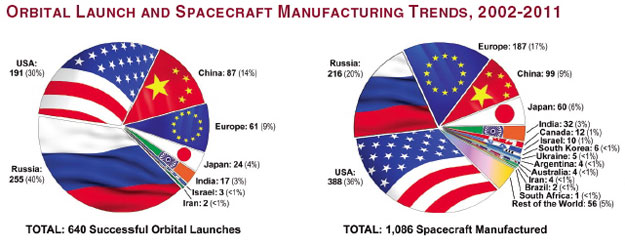SHAHED
FULL MEMBER

- Joined
- Mar 6, 2012
- Messages
- 750
- Reaction score
- 0
Two days ago . Isna :
برنامههای پژوهشگاه در زمینه ساخت ماهوارهها
رییس پژوهشگاه هوافضا با اشاره به اهداف سند هوافضا کشور یادآور شد: بر اساس این سند تا سال 1404 ایران باید ماهواره 500 کیلویی خود را در مدار ژئو (36 کیلومتری) قرار دهد.
امی با اشاره به آخرین ماهواره پرتاب شده کشور یادآور شد: ماهواره فجر که آخرین ماهواره پرتاب شده ایران است 50 کیلوگرم وزن داشته و برای رسیدن به وزن 500 کیلوگرم نیاز به نیروی رانش بالاتری خواهیم داشت.
وی همچنین با تاکید بر تمرکز فعالیتهای تحقیقاتی این پژوهشگاه در زمینه موتورهای فضایی خاطرنشان کرد: برای افزایش نیروی رانش باید به بخش موتورهای فضایی توجه شود و موتورهایی با پراکس بالا در کشور ساخته شود.
===========================================================================
Now + :
اُمّی افزود: با این حال، شهید مقدم گفت من این خطر را قبول میکنم و شروع به ساخت پروژه جدید کرد تا ماهواره بر با سوخت جامد بتواند ماهواره را در مدار 1000 کیلومتری قرار دهد.
وی خاطرنشان کرد: این پروژه «موشک قائم» بود که یک موشک «4 مرحلهای» تماما با سوخت جامد است. در سه مرحله تستها موفق بود و در مرحله آخر این اتفاق افتاد.
Conclusion : Qaem is not designed for Geo . Sure it's a big Slv but being big doesn't mean it can transfer a huge payload . For example check these two solid fueled ballistic missiles :
Sejjil
Weight 21,500 kg
Length 18.2 m
Diameter 1.25~1.50 m
Range : 2500 kilometers
MGM-134 Midgetman
Weight 13,600 kg
Length 14 m
Diameter 1.17 m
Range : 11,000 kilometers
I guess Qaem uses the same fuel as sejjil (If not then again not a much more powerful fuel ) . The fuel is not that powerful to make too much thrust so they need to make huge motors ( like the fist stage ) to increase thrust and its payload capacity .
اُمّی افزود: با این حال، شهید مقدم گفت من این خطر را قبول میکنم و شروع به ساخت پروژه جدید کرد تا ماهواره بر با سوخت جامد بتواند ماهواره را در مدار 1000 کیلومتری
1000 km orbit . It will be sth with the same capability as start 1 :
View attachment 214350
start 1 : based on topol icbm
Capacity
Payload toLEO 532 kg (1,393 lbm)
Payload to
SSO 167 kg (368 lbm)
But let me make it clear . It's still a huge progress if it be successful . We launched the first sat in 2009 . our current launcher can launch nothing but a 50 kg micro sat for couple of months . With this one we will be able to put operational 500 kg sats into 500 -1000 km orbit and use them for years not days or months . and who knows maybe a potential silo based Icbm .
You better to compare it with VEGA













